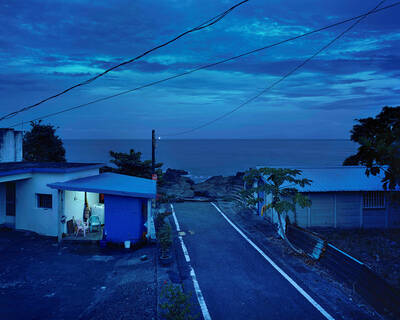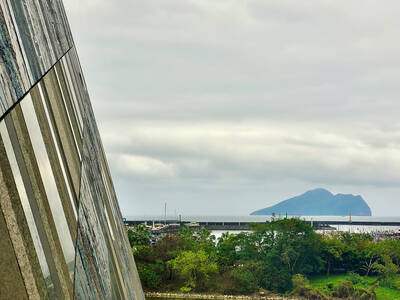The Cannes Film Festival, which kicks off today, is such a colossal extravaganza that taking measure of its ups and downs is notoriously difficult. It’s a showcase of the world’s best cinema. It’s a red-carpet spectacular. It’s a French Riviera hive of dealmaking.
But by at least some metrics, Cannes — following a canceled 2020 festival, a much-diminished 2021 edition and a triumphant return last year — is finally all the way back.
“Let’s just say it’s gotten very hard to get restaurant reservations again,” says Christine Vachon, the veteran producer and longtime collaborator of Todd Haynes.

Photo: AP
When the 76th Cannes Film Festival opens Tuesday with the premiere of Jeanne du Barry, a historical drama by Maiwenn starring Johnny Depp, the gleaming Cote d’Azur pageant can feel confident that it has weathered the storms of the pandemic and the perceived threat of streaming. (Netflix and Cannes remain at an impasse.)
Last year’s festival, a banner one by most judgments, produced three Oscar best-picture nominees (Top Gun: Maverick, Elvis and the Palme d’Or winner Triangle of Sadness), again proving Cannes as the premiere global launching pad for films big and small.
A BLOCKBUSTER CANNES

Photo: Reuters
This year’s festival is headlined by a pair of marquee premieres: Martin Scorsese’s Osage Nation 1920s epic Killers of the Flower Moon, with Leonardo DiCaprio and Robert De Niro, and James Mangold’s Indiana Jones and the Dial of Destiny, starring Harrison Ford in his final performance as the character.
But as blockbuster as Cannes can be, even those films suggest the wide spectrum of cinema on hand. Both Scorsese and Mangold were first in Cannes decades ago to premiere their early breakthrough films in the Directors Fortnight sidebar. Scorsese with 1973’s Mean Streets, Mangold with 1995’s Heavy.
This time, though, they’ll debut much bigger films, sure to be the hottest tickets on the Croisette. Scorsese has his US$200 million epic for Apple TV+. And Mangold will premiere, as he says, “a more splendiferous project” than his minimalist debut.
The “Indy” celebration will include a tribute to Ford. He, along with Michael Douglas, will be given honorary Palme d’Ors. To Mangold, it’s a chance for Ford to embrace the franchise’s international following. The “Indiana Jones” films’ essence, the director says, is rooted in golden-age cinema.
“These are things where you’re taking your guidance from the classics,” Mangold says. “That’s something that’s really appreciated by the French about American cinema. In many ways, they revere the old pictures more than even the audience in the United States do. That makes it a really wonderful platform.”
A RECORD HIGH FOR FEMALE FILMMAKERS
This year, 21 films are competing for the Palme d’Or, which will be decided by a jury led by last year’s winner, Swedish writer-director Ruben Ostlund. Seven are directed by women, a new high for Cannes in its nearly eight decades of existence. Among the most anticipated is Italian filmmaker Alice Rohrwacher’s La Chimera, starring Josh O’Connor and Isabella Rossellini.
The festival, running through May 27, will unspool against the backdrop of labor unrest on both sides of the Atlantic. France has been beset in recent months by protests over pension reforms, including raising the retirement age. In the US, screenwriters are on strike to seek better pay in the streaming era.
The prospect of a prolonged work stoppage could potentially drive up prices for finished films at Cannes, the world’s top movie market. Among the titles seeking distribution is Haynes’ May December, which stars Natalie Portman as a journalist who embeds with a couple (Julianne Moore, Charles Melton) once renown for their age discrepancy.
Though arthouses have struggled to match the box-office recovery at multiplexes, Vachon, a producer on May December, says her company, Killer Films, and the indie stalwart Haynes are accustomed to “pivoting endlessly and finding opportunities no matter what the sea winds bring.”
AUTEURS AND A-LISTERS
As usual, this year’s competition lineup returns plenty of Cannes heavyweights, including Hirokazu Kore-eda (Monster), Wim Wenders (Perfect Days), Nuri Bilge Ceylan (About Dry Grasses), Ken Loach (The Old Oak) and Nanny Moretti (A Brighter Tomorrow).
Jonathan Glazer’s The Zone of Interest, shot in Auschwitz, is one of the festival’s most eagerly awaited films. It’s his first since 2013’s Under the Skin. Pedro Almodovar will premiere the short Strange Way of Life, with Pedro Pascal and Ethan Hawke. Wes Anderson, flanked by another starry ensemble, will debut Asteroid City.
There’s also the upcoming HBO series The Idol, from Euphoria filmmaker Sam Levinson starring the Weeknd and Lily-Rose Depp; Firebrand with Alicia Vikander as Catherine Parr and Judd Law as Tudor King Henry VIII; and the Pixar movie Elemental, which closes the festival.
Steve McQueen, the 12 Years of Slave filmmaker, will debut the longest film playing at Cannes and one of its most thought-provoking. Occupied City, which McQueen made with his wife, Dutch author Bianca Stigter, is a four hour-plus documentary that combines narration detailing violent incidents across Amsterdam during the Nazi occupation with present-day footage from those locations.
McQueen, too, began his feature filmmaking career at Cannes. His 2008 debut, Hunger, won the Camera d’Or, a prize for best first film. “It’s never as good as the first time,” McQueen says.
“But it’s the most important film festival,” continues McQueen. “Our film is asking questions. This is where you want to premiere films that challenge and films that ask questions. You’re right on the front line.”
POTENTIAL BREAKTHROUGHS
While many eyes will be on reactions to the new Scorsese or Asteroid City, Cannes will, as it does every year, bring new directors to wider film audiences. Senegalese filmmaker Ramata-Toulaye Sy’s Banel & Adama is the rare first feature in Palme competition.
Argentine filmmaker Rodrigo Moreno, 50, will be making his first trip to Cannes with The Delinquents, a heist drama sprinkled with existentialism and cinematic flourishes. It’s one of the highlights of the Un Certain Regard section.
The film took Moreno five years to make, partially because of the pandemic. But its Cannes selection is a long time coming in another way. Moreno’s first feature as a solo director was invited to both Un Certain Regard and main competition at Berlin. The producers chose Berlin.
“At this point of my career. I’m focused on: If this allows me to keep on working and make the next film, to me, that’s OK. It’s the only thing I really want,” says Moreno.
“The shooting of this film spanned almost five years, which is crazy,” he adds. “But the nice side of that is that every year, I had to shoot. The one thing I knew was that a new year began, and I had to shoot. And the following, I had to shoot.”

A white horse stark against a black beach. A family pushes a car through floodwaters in Chiayi County. People play on a beach in Pingtung County, as a nuclear power plant looms in the background. These are just some of the powerful images on display as part of Shen Chao-liang’s (沈昭良) Drifting (Overture) exhibition, currently on display at AKI Gallery in Taipei. For the first time in Shen’s decorated career, his photography seeks to speak to broader, multi-layered issues within the fabric of Taiwanese society. The photographs look towards history, national identity, ecological changes and more to create a collection of images

A series of dramatic news items dropped last month that shed light on Chinese Communist Party (CCP) attitudes towards three candidates for last year’s presidential election: Taiwan People’s Party (TPP) founder Ko Wen-je (柯文哲), Terry Gou (郭台銘), founder of Hon Hai Precision Industry Co (鴻海精密), also known as Foxconn Technology Group (富士康科技集團), and New Taipei City Mayor Hou You-yi (侯友宜) of the Chinese Nationalist Party (KMT). It also revealed deep blue support for Ko and Gou from inside the KMT, how they interacted with the CCP and alleged election interference involving NT$100 million (US$3.05 million) or more raised by the

At a funeral in rural Changhua County, musicians wearing pleated mini-skirts and go-go boots march around a coffin to the beat of the 1980s hit I Hate Myself for Loving You. The performance in a rural farming community is a modern mash-up of ancient Chinese funeral rites and folk traditions, with saxophones, rock music and daring outfits. Da Zhong (大眾) women’s group is part of a long tradition of funeral marching bands performing in mostly rural areas of Taiwan for families wanting to give their loved ones an upbeat send-off. The band was composed mainly of men when it started 50

While riding a scooter along the northeast coast in Yilan County a few years ago, I was alarmed to see a building in the distance that appeared to have fallen over, as if toppled by an earthquake. As I got closer, I realized this was intentional. The architects had made this building appear to be jutting out of the Earth, much like a mountain that was forced upward by tectonic activity. This was the Lanyang Museum (蘭陽博物館), which tells the story of Yilan, both its natural environment and cultural heritage. The museum is worth a visit, if only just to get a